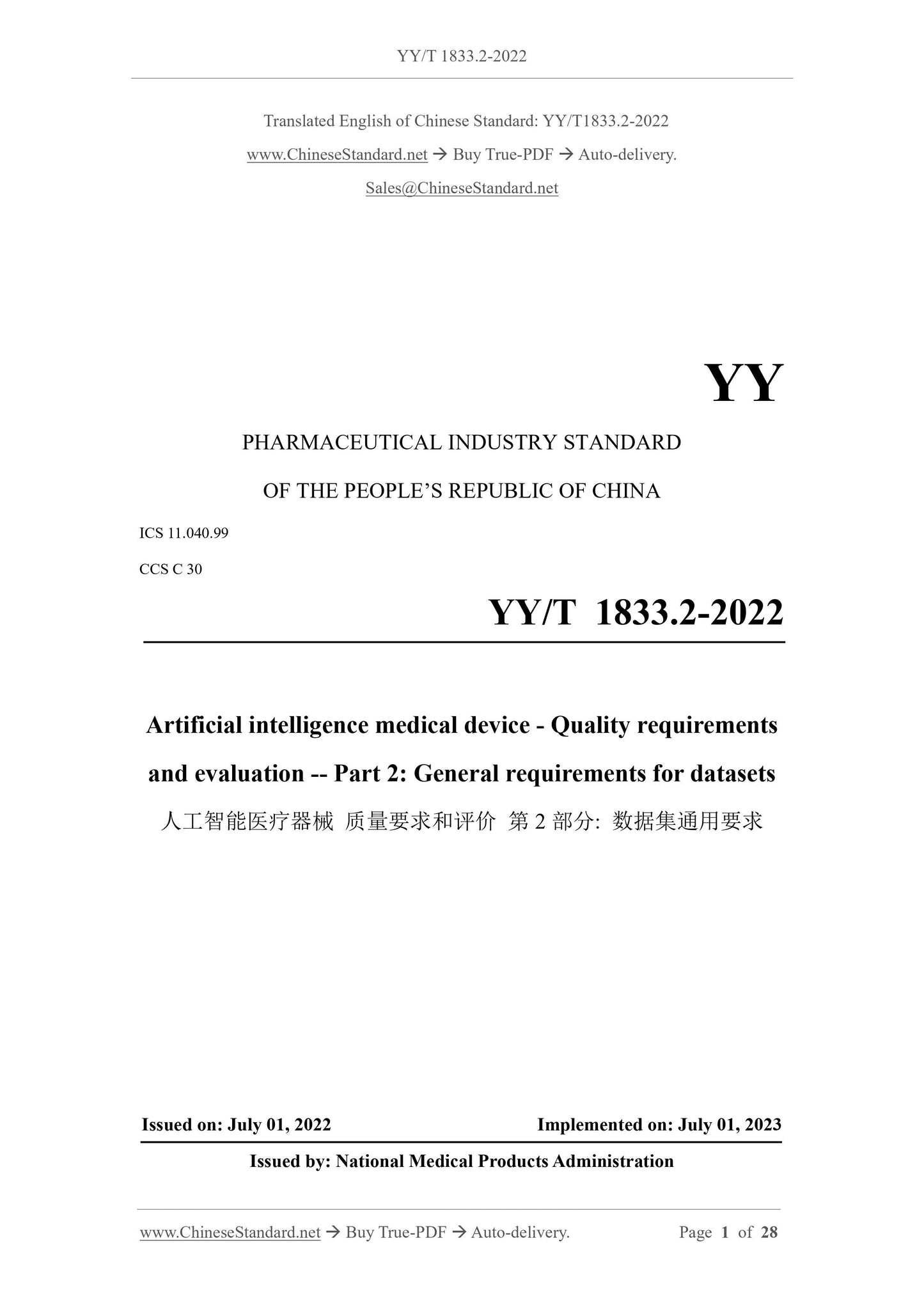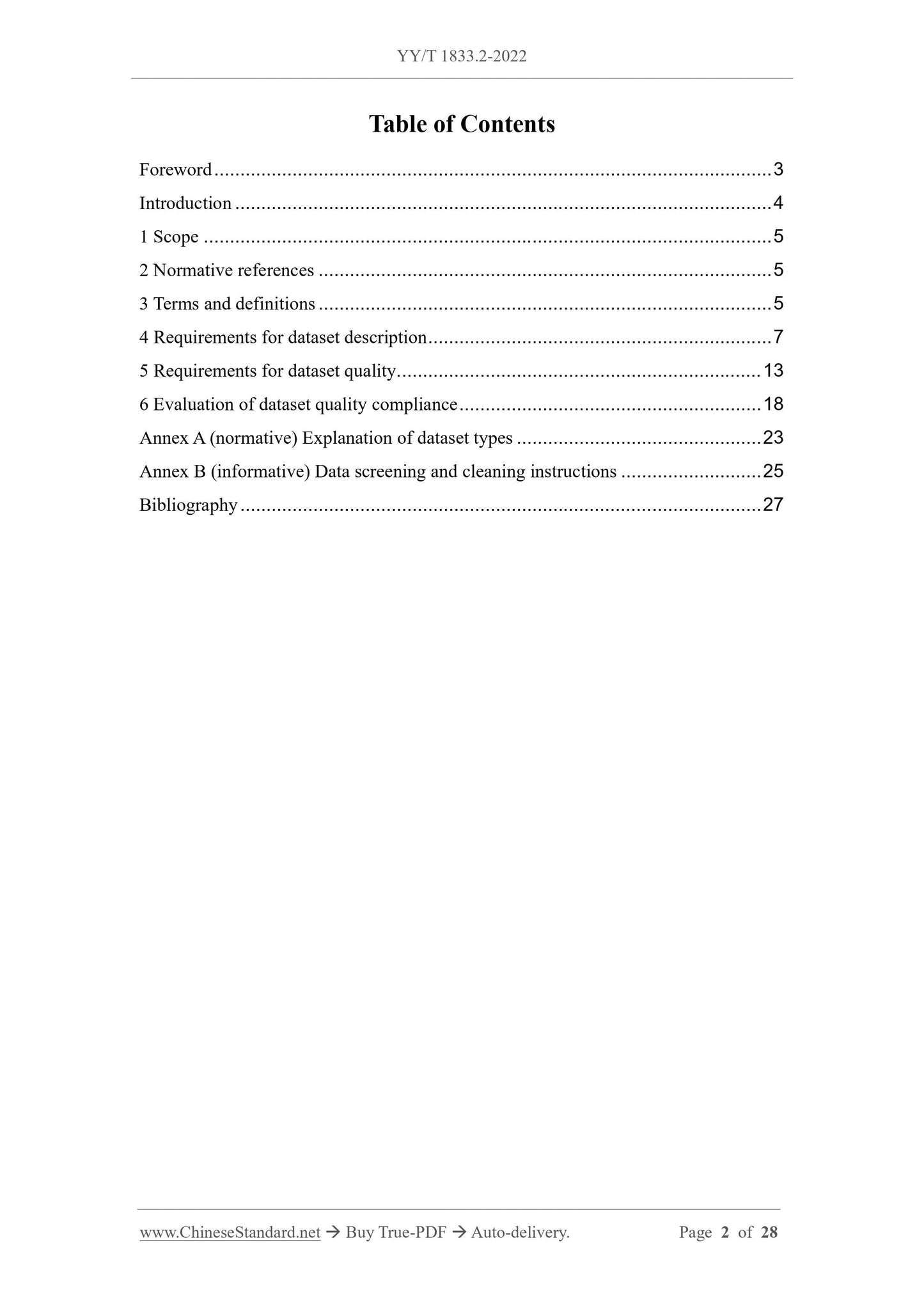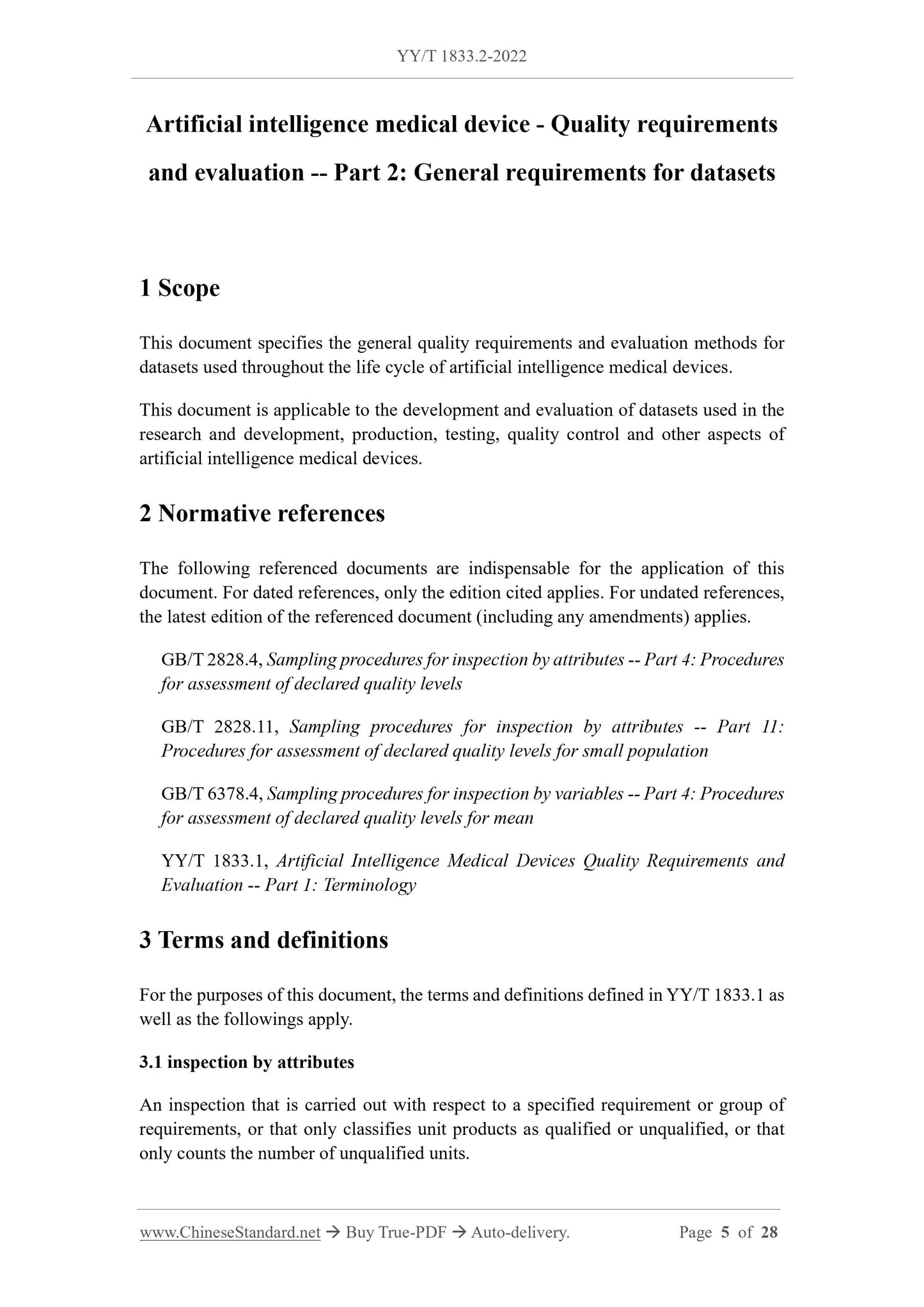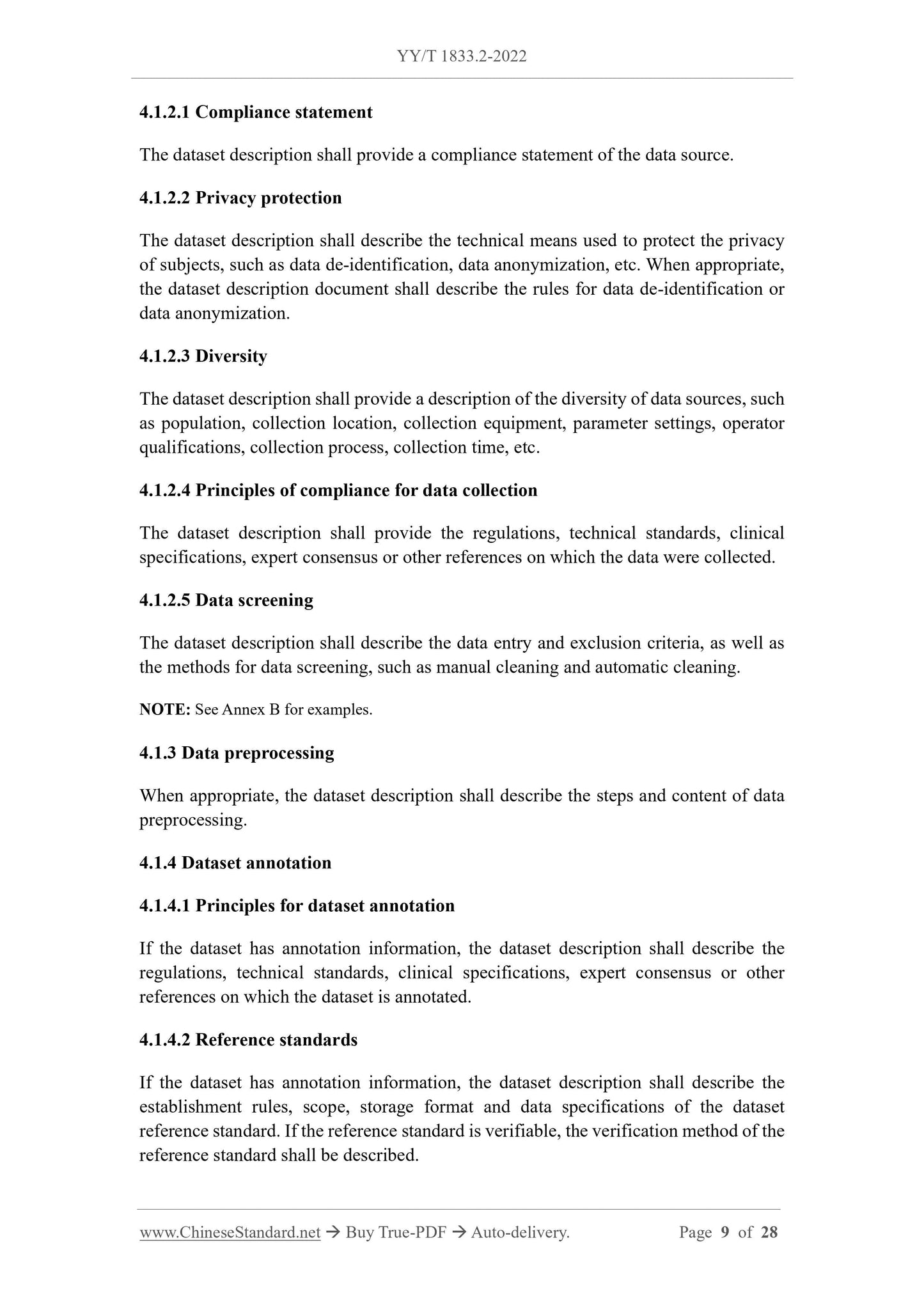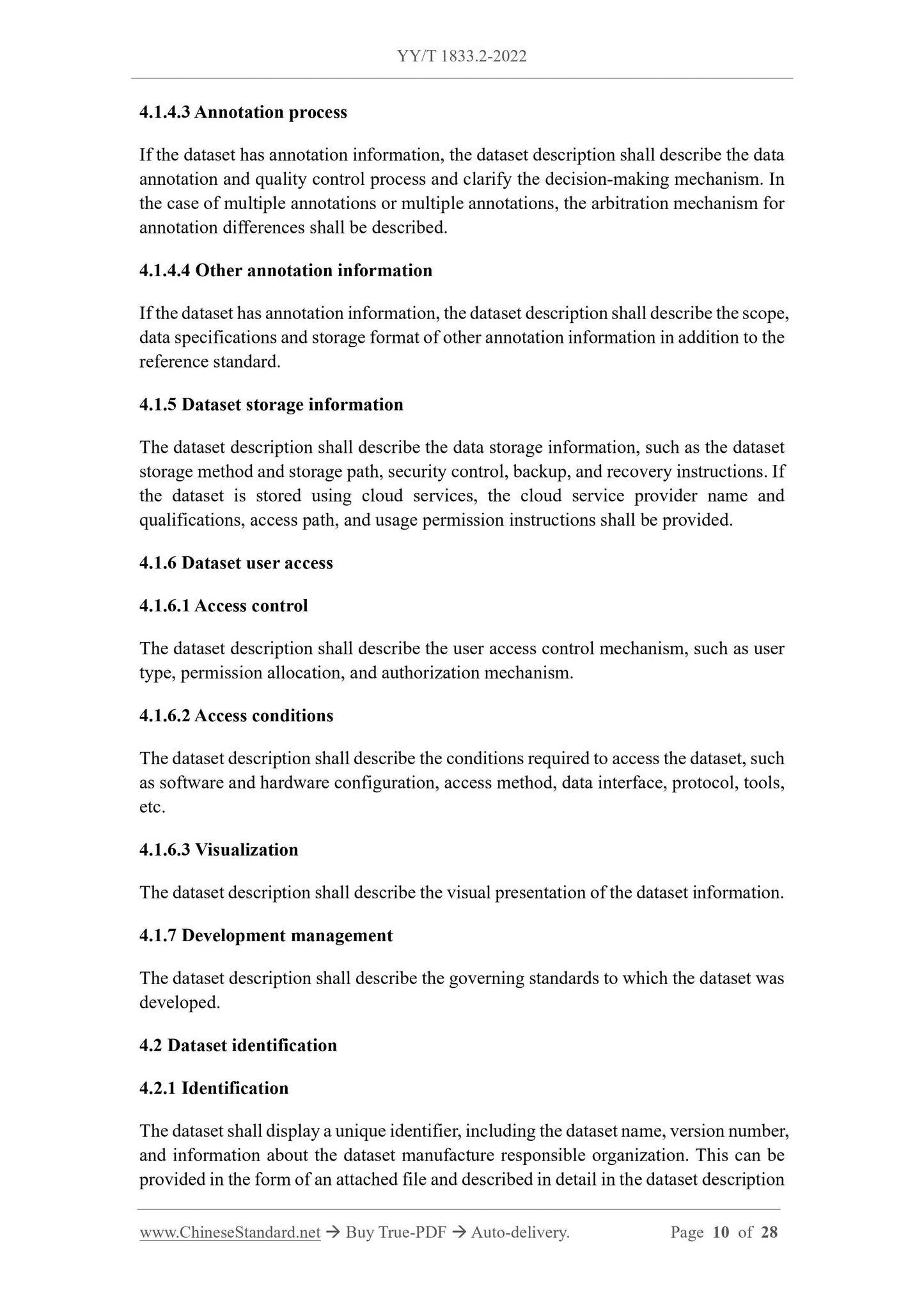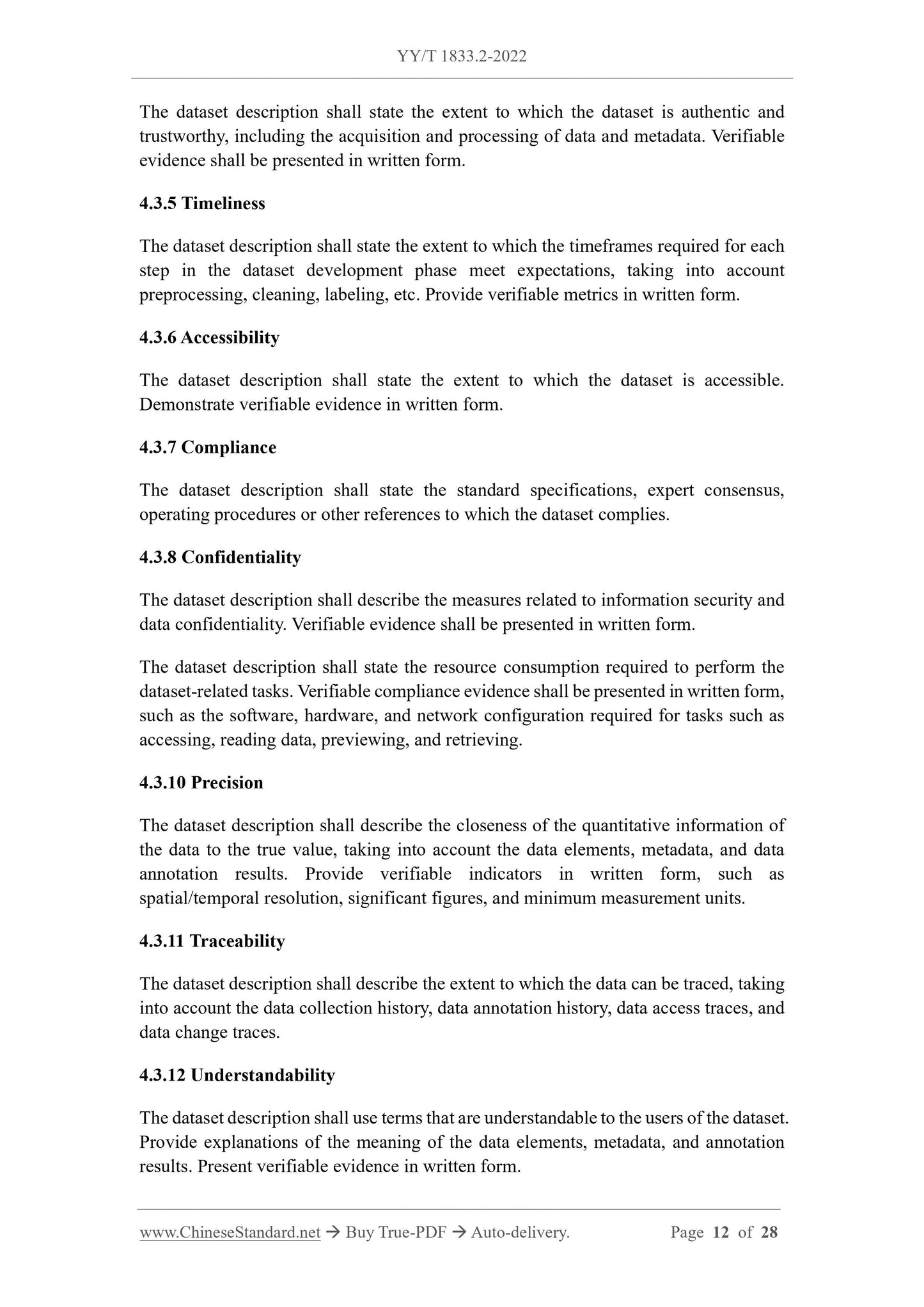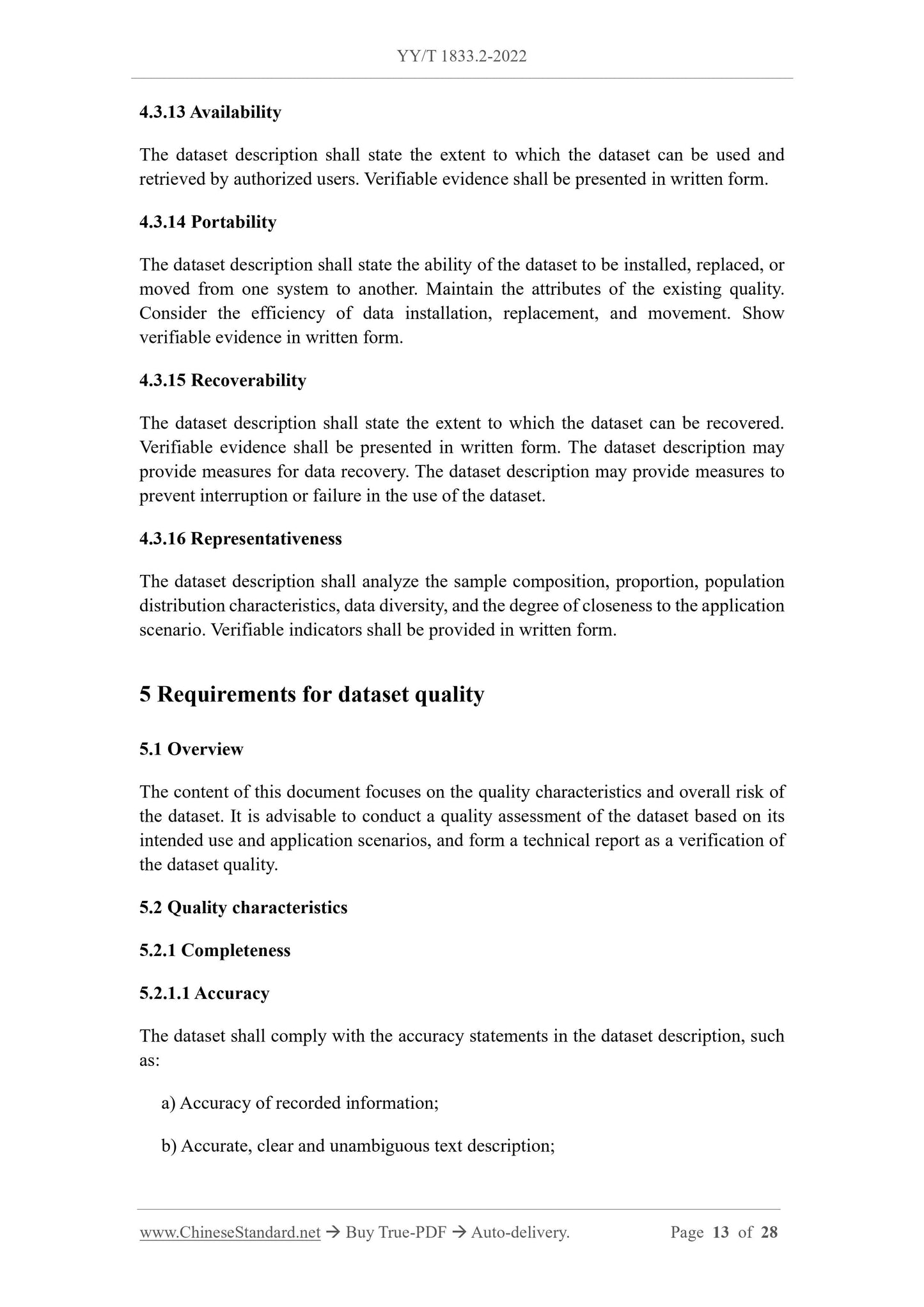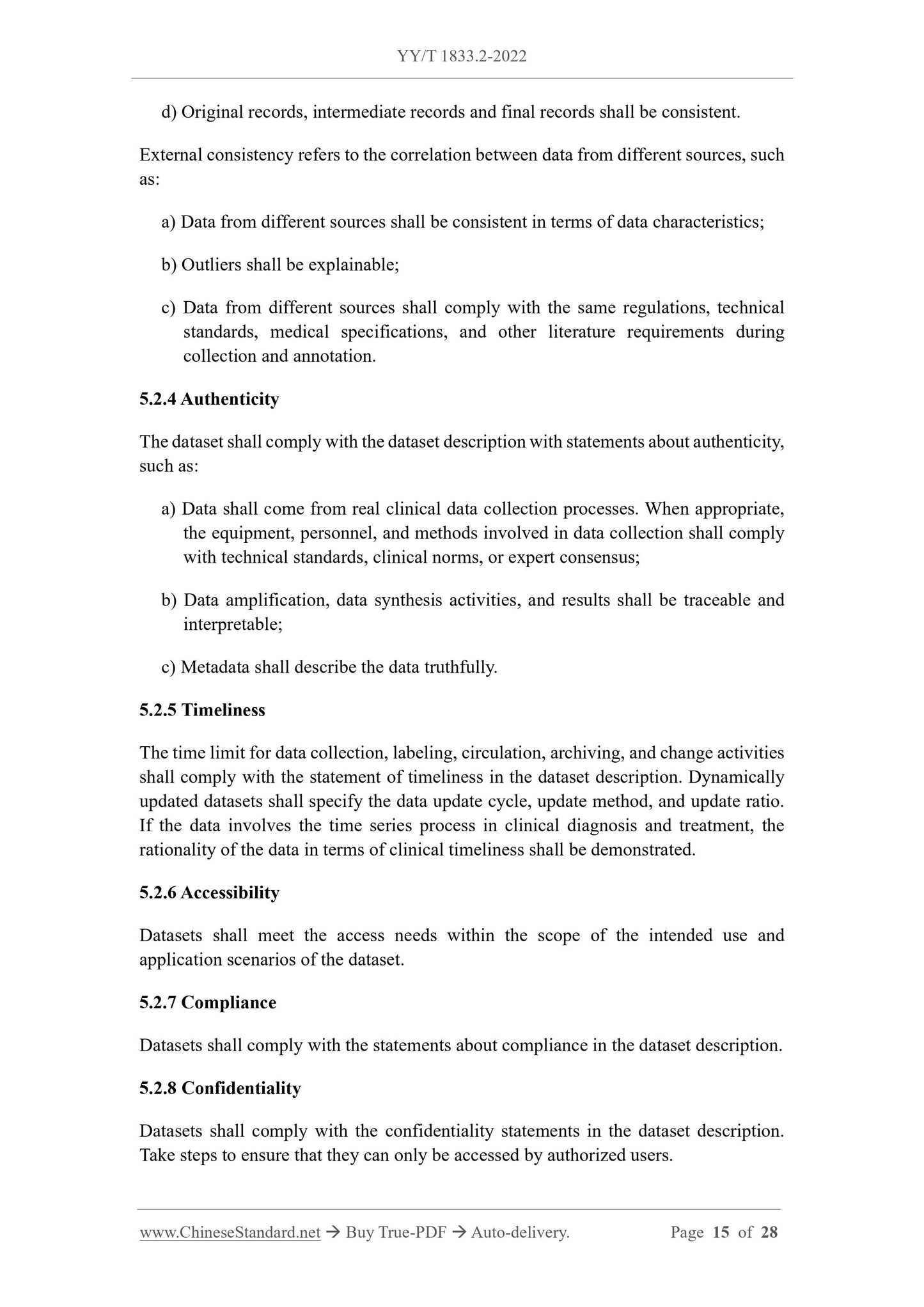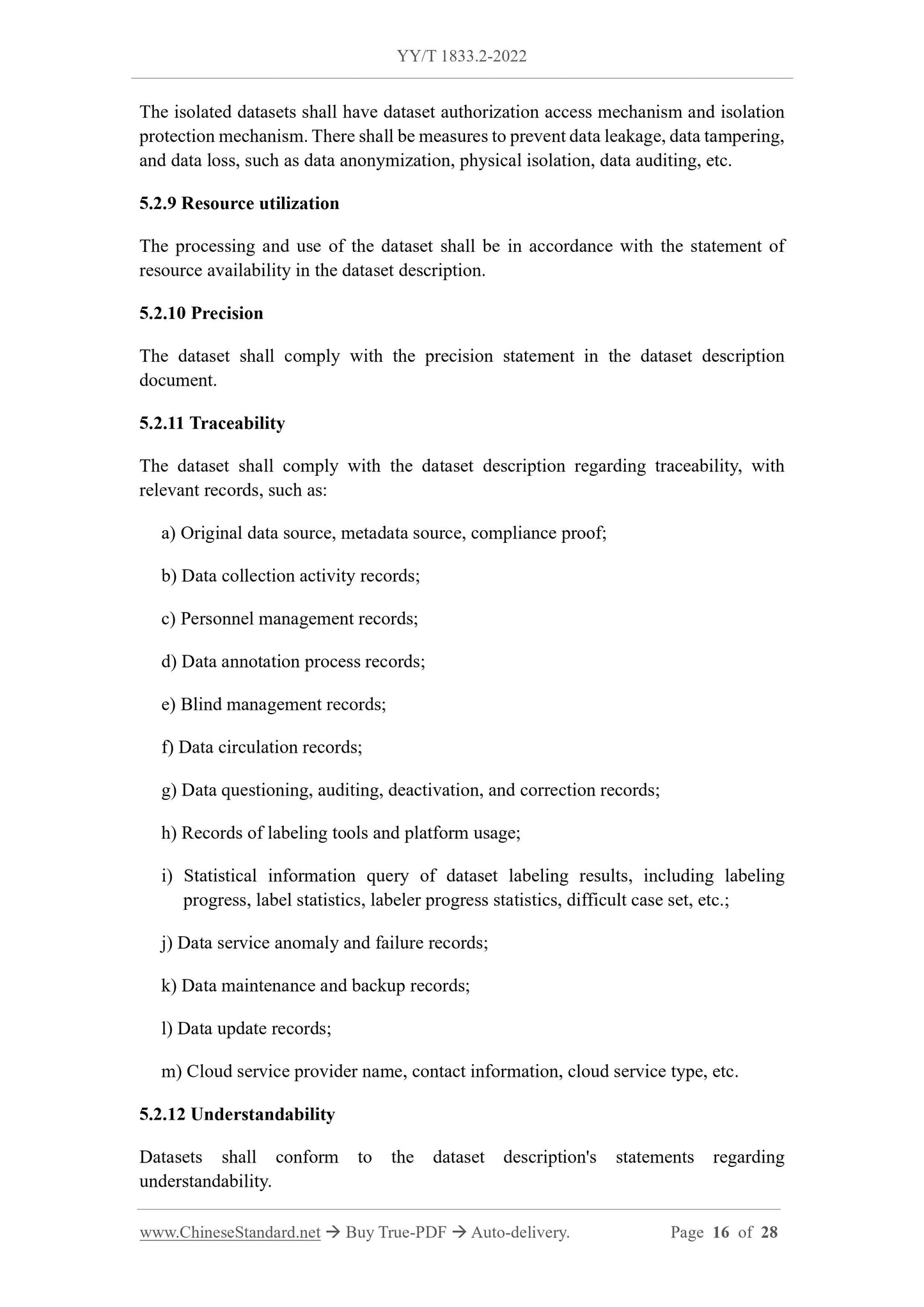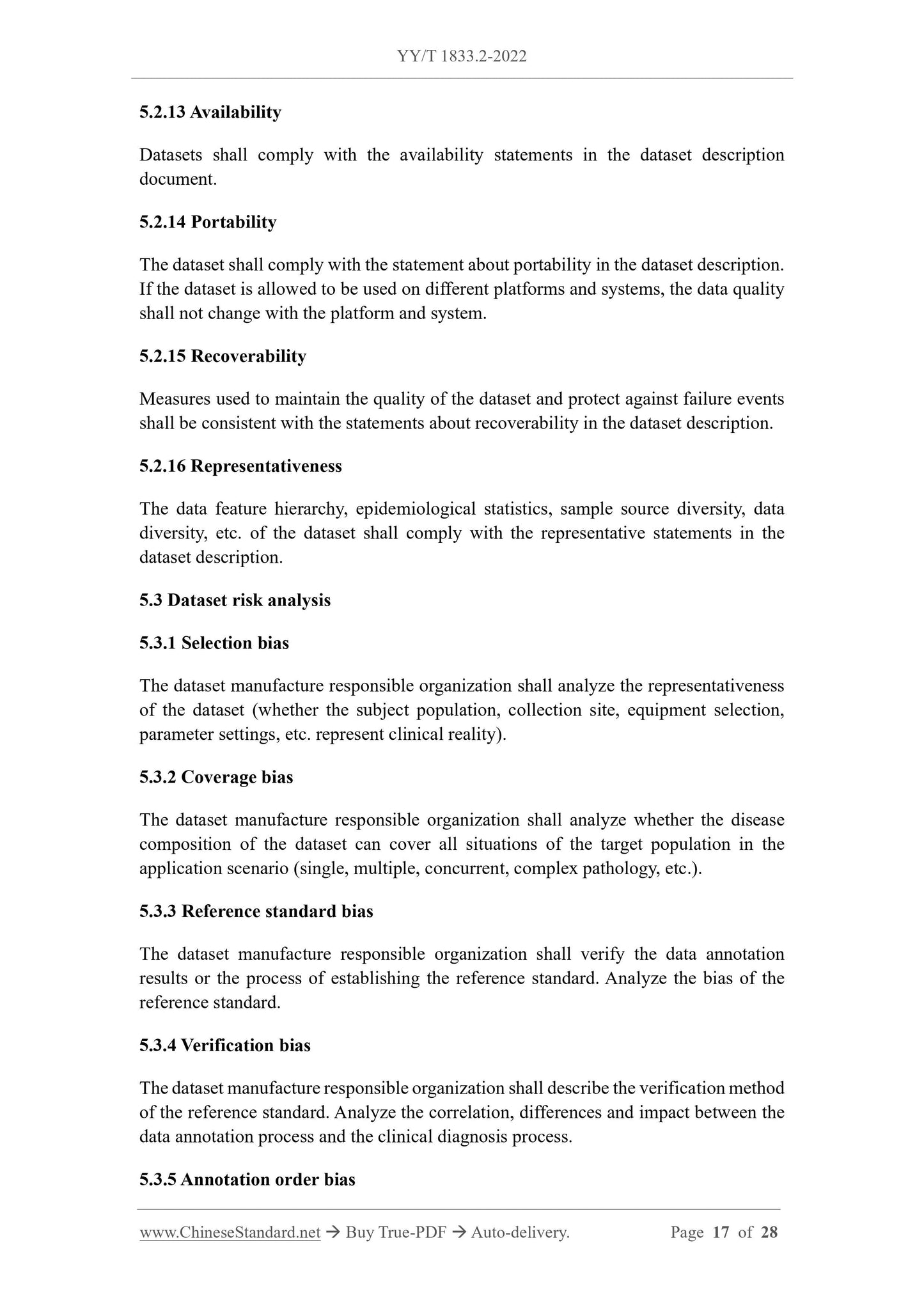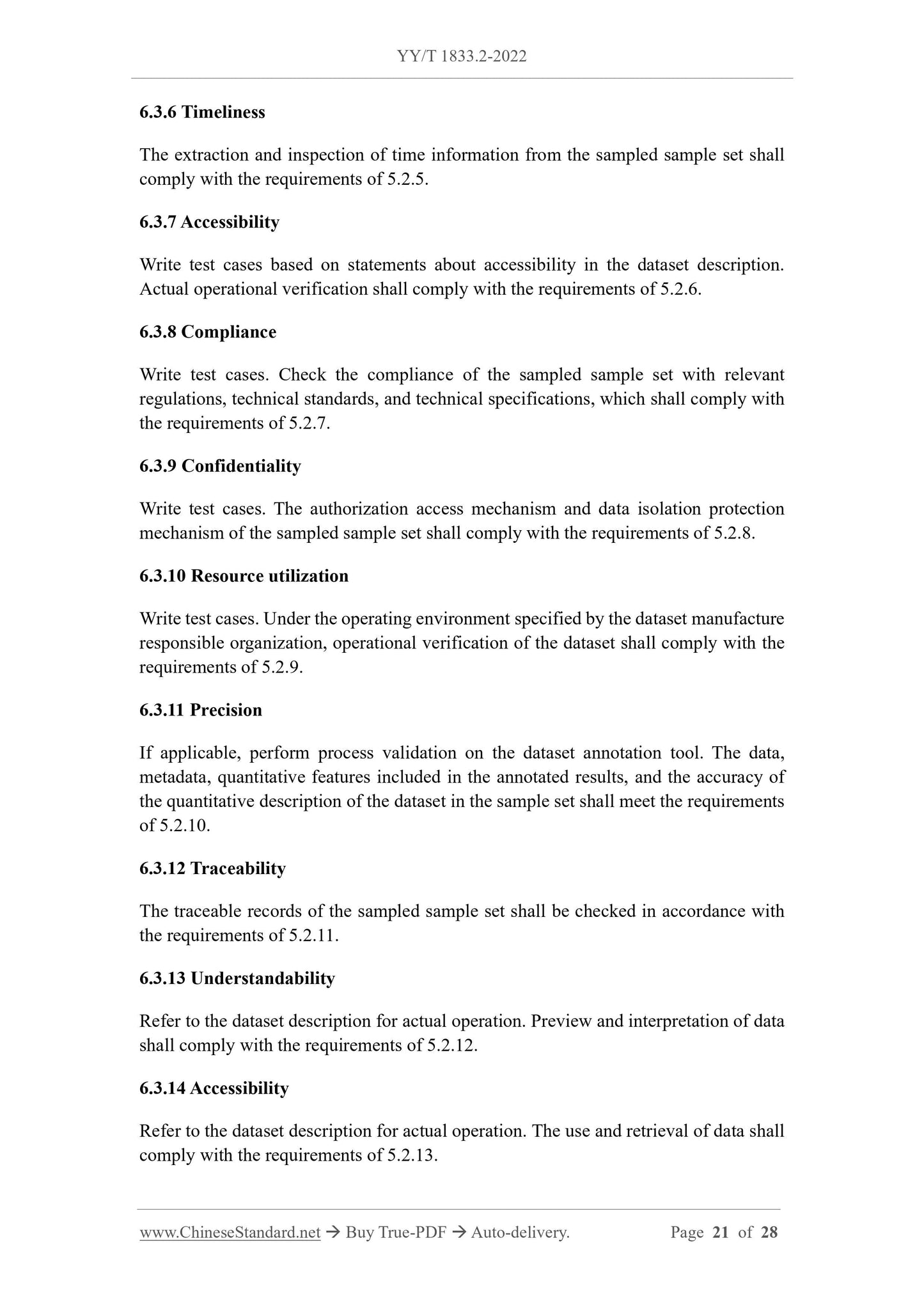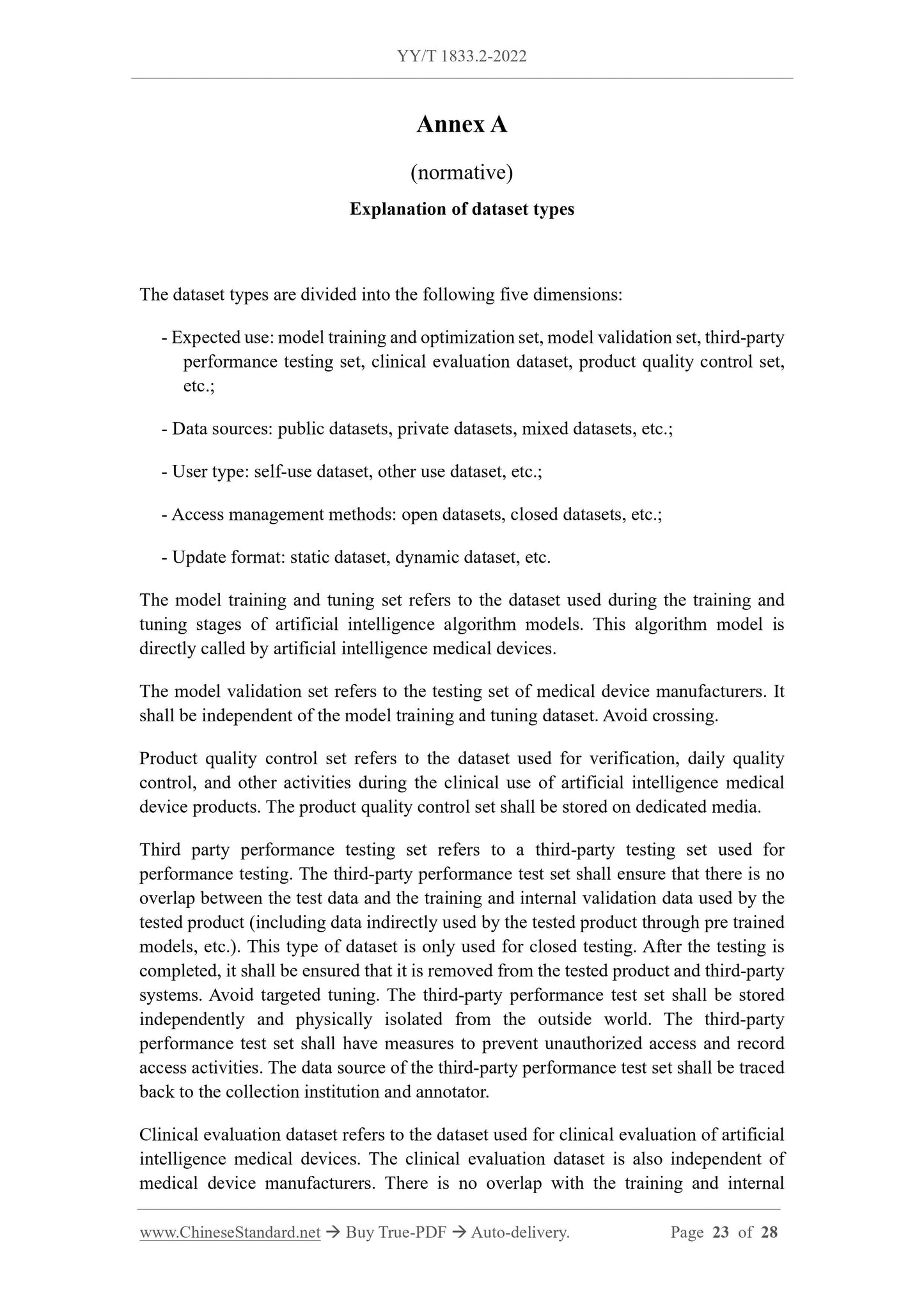1
/
of
12
www.ChineseStandard.us -- Field Test Asia Pte. Ltd.
YY/T 1833.2-2022 English PDF (YY/T1833.2-2022)
YY/T 1833.2-2022 English PDF (YY/T1833.2-2022)
Regular price
$350.00
Regular price
Sale price
$350.00
Unit price
/
per
Shipping calculated at checkout.
Couldn't load pickup availability
YY/T 1833.2-2022: Artificial intelligence medical device - Quality requirements and evaluation - Part 2: General requirements for datasets
Delivery: 9 seconds. Download (and Email) true-PDF + Invoice.Get Quotation: Click YY/T 1833.2-2022 (Self-service in 1-minute)
Newer / historical versions: YY/T 1833.2-2022
Preview True-PDF
Scope
This document specifies the general quality requirements and evaluation methods fordatasets used throughout the life cycle of artificial intelligence medical devices.
This document is applicable to the development and evaluation of datasets used in the
research and development, production, testing, quality control and other aspects of
artificial intelligence medical devices.
Basic Data
| Standard ID | YY/T 1833.2-2022 (YY/T1833.2-2022) |
| Description (Translated English) | Artificial intelligence medical device - Quality requirements and evaluation - Part 2: General requirements for datasets |
| Sector / Industry | Medical Device and Pharmaceutical Industry Standard (Recommended) |
| Classification of Chinese Standard | C30 |
| Word Count Estimation | 23,224 |
| Issuing agency(ies) | State Drug Administration |
Share
